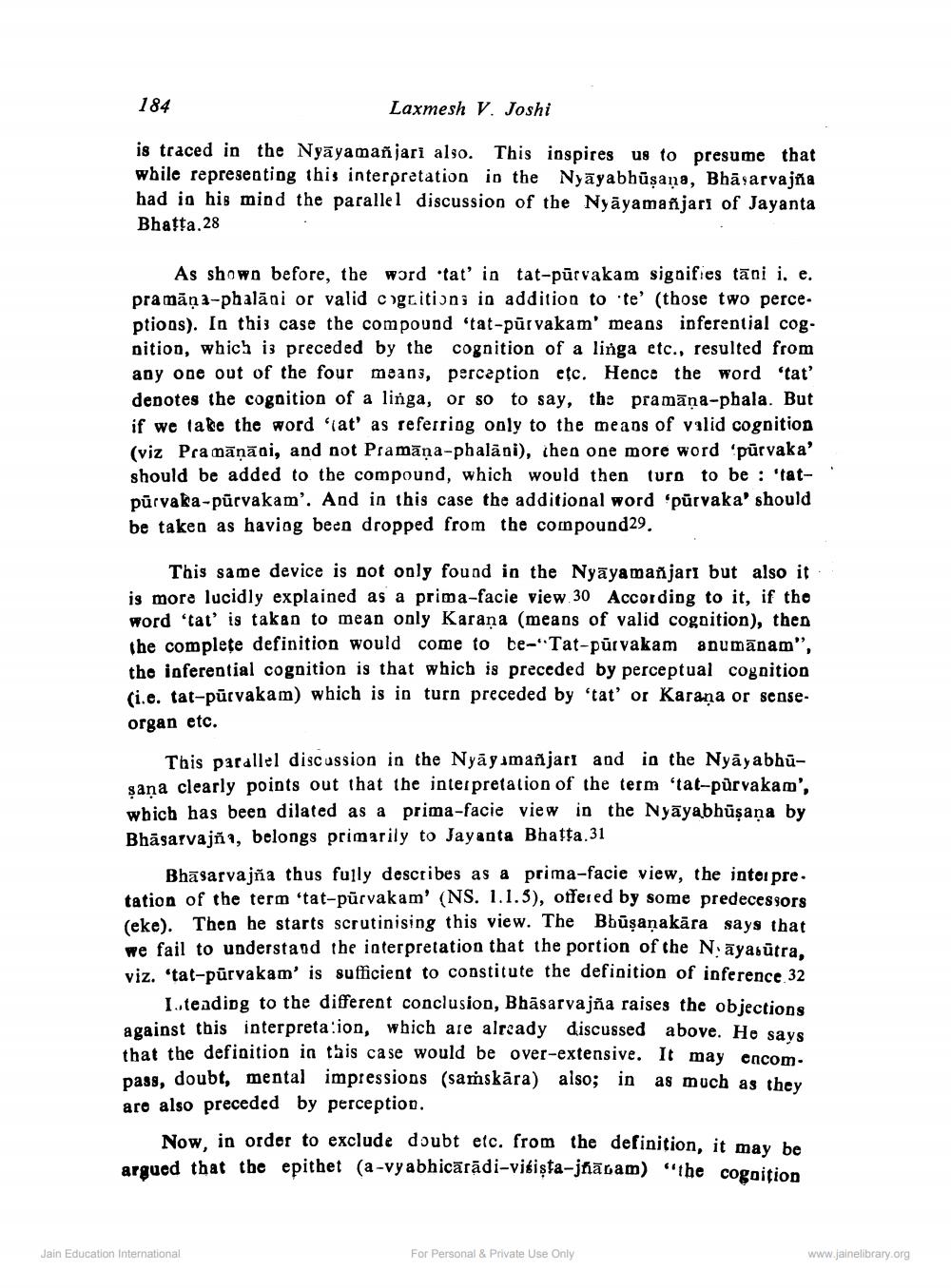________________
184
Laxmesh V. Joshi
is traced in the Nyāyamañjari also. This inspires us to presume that while representing this interpretation in the Nyāyabhūsaņa, Bhāsarvajña had in his mind the parallel discussion of the Nyāyamañjari of Jayanta Bhatta.28
As shown before, the word 'tat' in tat-pūrvakam signifies tāni i. e. pramāņa-phalāni or valid cigoitions in addition to 'te' (those two perce. ptions). In this case the compound 'tat-pūrvakam' means inferential cognition, which is preceded by the cognition of a linga etc., resulted from any one out of the four means, perception etc. Hence the word 'tat' depotes the cognition of a linga, or so to say, the pramāna-phala. But if we take the word 'rat' as referring only to the means of valid cognition (viz Pra māņāoi, and not Pramāņa-phalāni), then one more word 'pūrvaka' should be added to the compound, which would then turn to be : 'tatpūrvaka-pūrvakam'. And in this case the additional word 'pūrvaka' should be taken as having been dropped from the compound29.
This same device is not only found in the Nyāyamañjari but also it is more lucidly explained as a prima-facie view 30 According to it, if the word 'tat' is takan to mean only Karana (means of valid cogoition), then the complete definition would come to be-"Tat-pūrvakam anumānam", the inferential cognition is that which is preceded by perceptual cogaition ci.e. tat-pūrvakam) which is in turn preceded by 'tat' or Karana or senseorgan etc.
This parallel discussion in the Nyāyamañjari and in the Nyāyabhūsana clearly points out that the interpretation of the term 'tat-pūrvakam', wbich has been dilated as a prima-facie view in the Nyāyabhūsana by Bhäsarvajña, belongs primarily to Jayanta Bhatta.31
Bhasarvajña thus fully describes as a prima-facie view, the interpre. tation of the term 'tat-pūrvakam' (NS. 1.1.5), offered by some predecessors (eke). Then he starts scrutinising this view. The Bbūşanakära says that we fail to understand the interpretation that the portion of the N. āyasūtra. viz. 'tat-pūrvakam' is sufficient to constitute the definition of inference 32
I teading to the different conclusion, Bhāsarvajña raises the objections against this interpretacion, which are already discussed above. He says that the definition in this case would be over-extensive. It may encompase, doubt, mental impressions (saṁskāra) also; in as much as they are also preceded by perception.
Now, in order to exclude doubt etc. from the definition, it may be argued that the epithet (a-vyabhicārādi-visişta-jnanam)"the cognition
Jain Education International
For Personal & Private Use Only
www.jainelibrary.org




